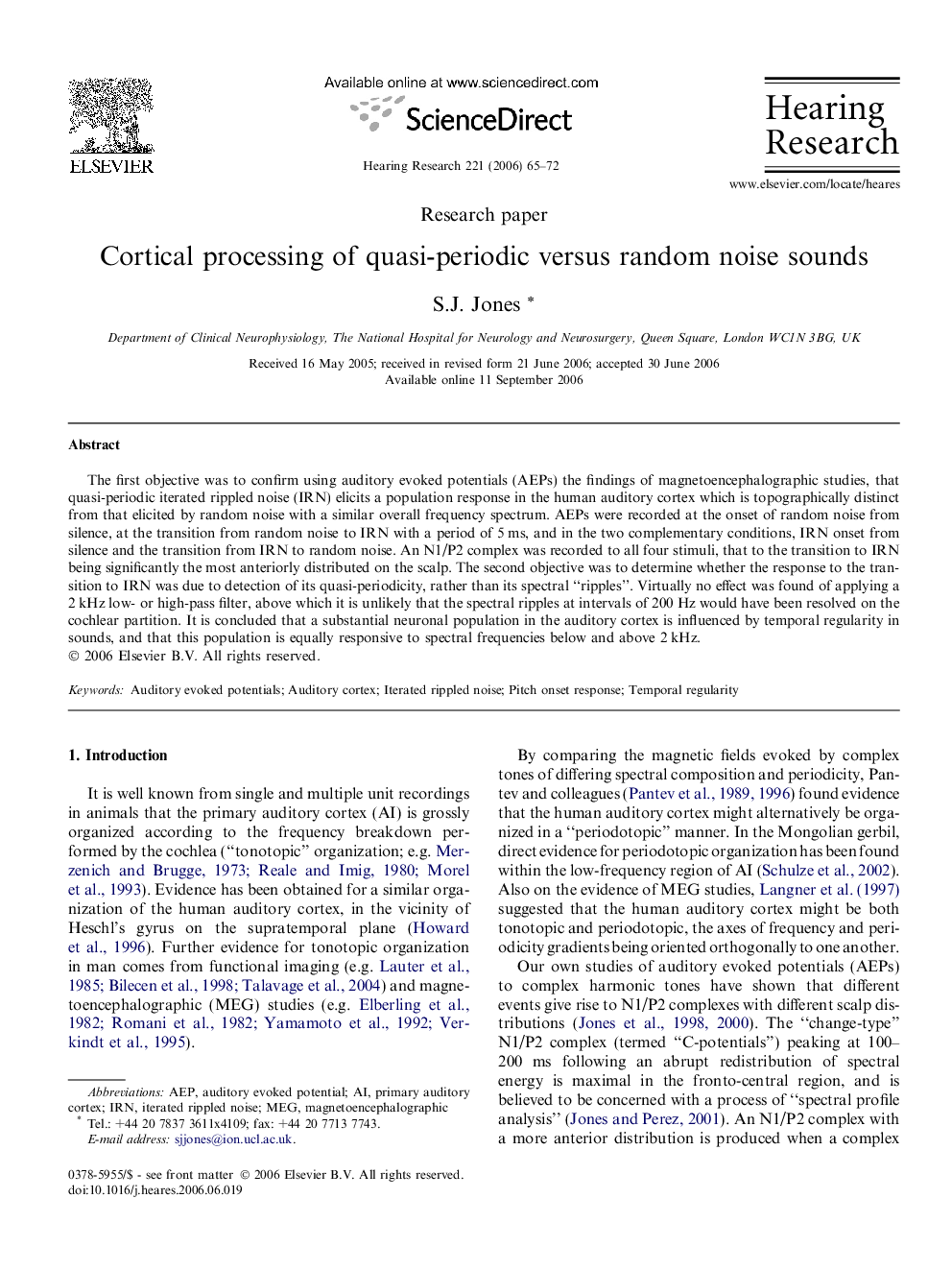| Article ID | Journal | Published Year | Pages | File Type |
|---|---|---|---|---|
| 4356301 | Hearing Research | 2006 | 8 Pages |
The first objective was to confirm using auditory evoked potentials (AEPs) the findings of magnetoencephalographic studies, that quasi-periodic iterated rippled noise (IRN) elicits a population response in the human auditory cortex which is topographically distinct from that elicited by random noise with a similar overall frequency spectrum. AEPs were recorded at the onset of random noise from silence, at the transition from random noise to IRN with a period of 5 ms, and in the two complementary conditions, IRN onset from silence and the transition from IRN to random noise. An N1/P2 complex was recorded to all four stimuli, that to the transition to IRN being significantly the most anteriorly distributed on the scalp. The second objective was to determine whether the response to the transition to IRN was due to detection of its quasi-periodicity, rather than its spectral “ripples”. Virtually no effect was found of applying a 2 kHz low- or high-pass filter, above which it is unlikely that the spectral ripples at intervals of 200 Hz would have been resolved on the cochlear partition. It is concluded that a substantial neuronal population in the auditory cortex is influenced by temporal regularity in sounds, and that this population is equally responsive to spectral frequencies below and above 2 kHz.
